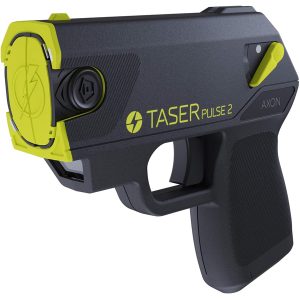Pain: immediate, intense local pain where contacts occur.
Muscle contraction:
local and sometimes involuntary contractions where current flows. With
conducted-probe stun devices (Tasers), pulses can produce widespread
neuromuscular disruption — causing loss of voluntary motor control for a
few seconds.
Sensory effects: tingling, numbness, or burning sensation at contact points.
Short-term: confusion, disorientation, loss of balance. Effects typically wear off within seconds to minutes after shock ends.
Medical risks:
while usually non-fatal, shocks can complicate cardiac conditions,
interact with implanted devices (pacemakers), cause falls/injuries, or
in rare cases contribute to serious outcomes when combined with other
factors (drug intoxication, excited delirium, prolonged restraint).
Check local law. Ownership, carry, and use of stun devices/Tasers are regulated — some cities/states/countries prohibit them or require permits.
Training: practice safe handling, aiming, and de-escalation. Know how to activate/deactivate and how to inspect/charge the unit.
Target area:
if lawful and required for self-defense, avoid the head, neck, chest
(over the heart), and groin to reduce the risk of severe injury. Avoid
use in water.
Medical caution:
don’t use on someone who is pregnant, has a pacemaker/ICD, or is known
to have serious heart disease unless threat justifies it.
After use:
move to safety, call authorities if necessary, and seek medical care if
the person has prolonged symptoms, chest pain, breathing trouble, or
loss of consciousness.




